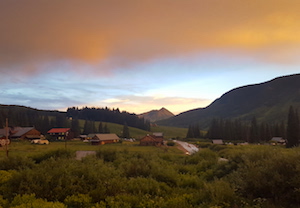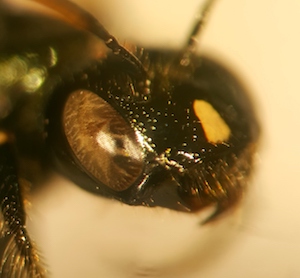Project Information

Red Columbine
Aquilegia elegantulaRocky Mountain Biological Lab and Crested Butte at sunset
Small Carpenter Bee
Ceratina sp.Understanding the Impact of Climate Change on Pollinators
At least 90% of flowering plant species require insects or other animals for pollination, making it a critically important ecosystem service. A variety of insects and animals can act as pollinators, but on a global scale, bees are the dominant pollinators in natural and agricultural environments. However, there is growing concern of global bee declines. Pollinators provide billions of dollars in crop pollination annually and are key to preserving plant reproduction and biodiversity. Global increases in the demand for insect-pollinated crops cannot be met by managed honey bees alone; a diversity of native bee pollinators often increases crop yield. Although a variety of factors are implicated in bee declines, global climate change has been strongly implicated as one driving factor. The best available evidence that bees are responding to climate change comes from bumble bees, with some species undergoing recent latitudinal and elevational shifts. Bumble bees are large, visually apparent, eusocial bees and it is not clear the degree to which their caste system may buffer them from moderate climate change. There are over 30,000 bee species globally, the vast majority of which are solitary, and it remains almost unknown how these bee species will respond to a warming world.
Our field sites in the Colorado Rocky Mountains
Our research sites are in and around the Rocky Mountain Biological Laboratory in Gothic, Colorado, USA in the West Elk Mountains, spanning an elevation gradient from 2496 m to 3428 m. Gothic is approx. 9 m from the town of Crested Butte, CO. This area hosts a rich diversity of bees and flowering plants and is home to a long-term flowering phenology dataset that was started in 1973 by David Inouye. Montane regions are expected to experience some of the most extreme changes with climate warming, making this research especially urgent given increasing warming trends.
Our research approach
Since 2009, we have been monitoring the abundance and diversity of bees and flowering plants in sites across the elevation gradient. Every two weeks we pan trap and net for bees and recording flowering abundance and phenology. This in combination the detailed long-term flowering phenology dataset started in 1973 by David Inouye and localized weather and snowmelt data from billy barr, we can test predictions for how bees and their host plants will respond to a warming world.
Along with the monitoring data, we also perform experiments to dissect the direct and indirect effects of climate change on plants, pollinators and their interactions.


